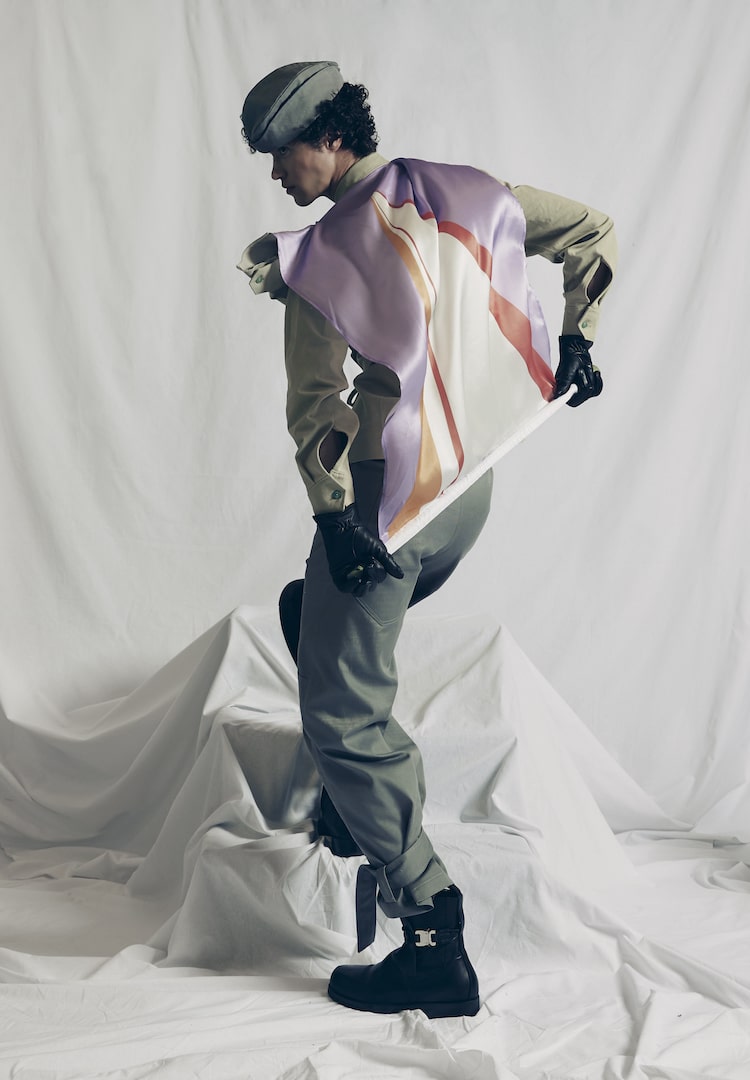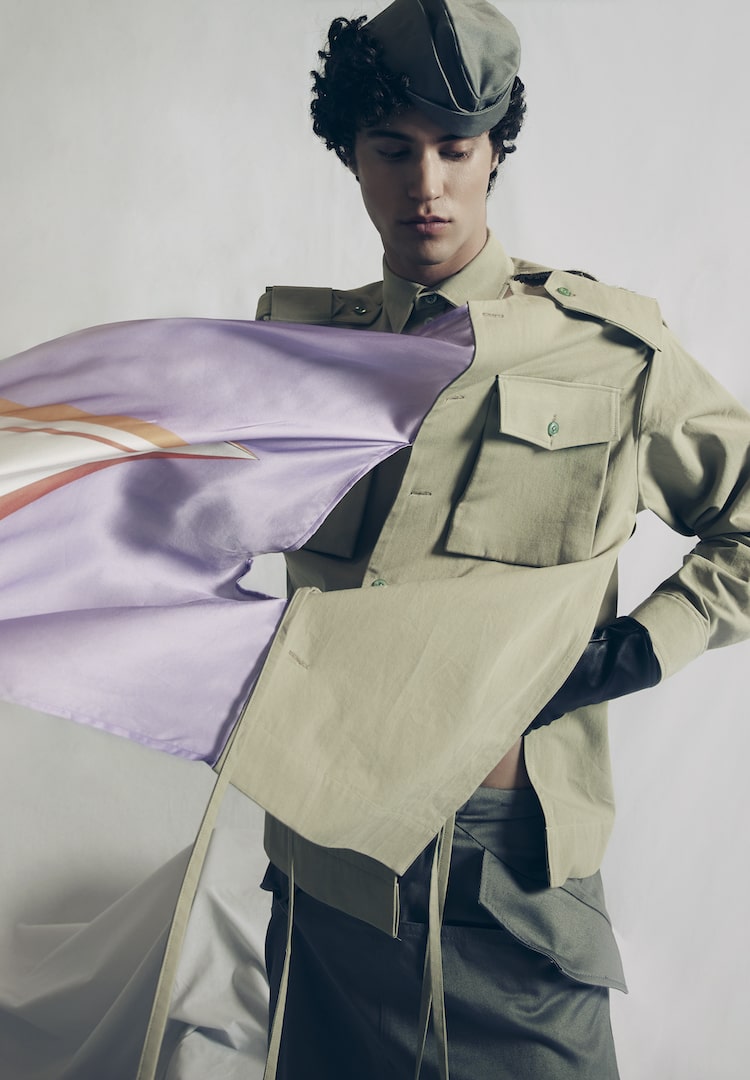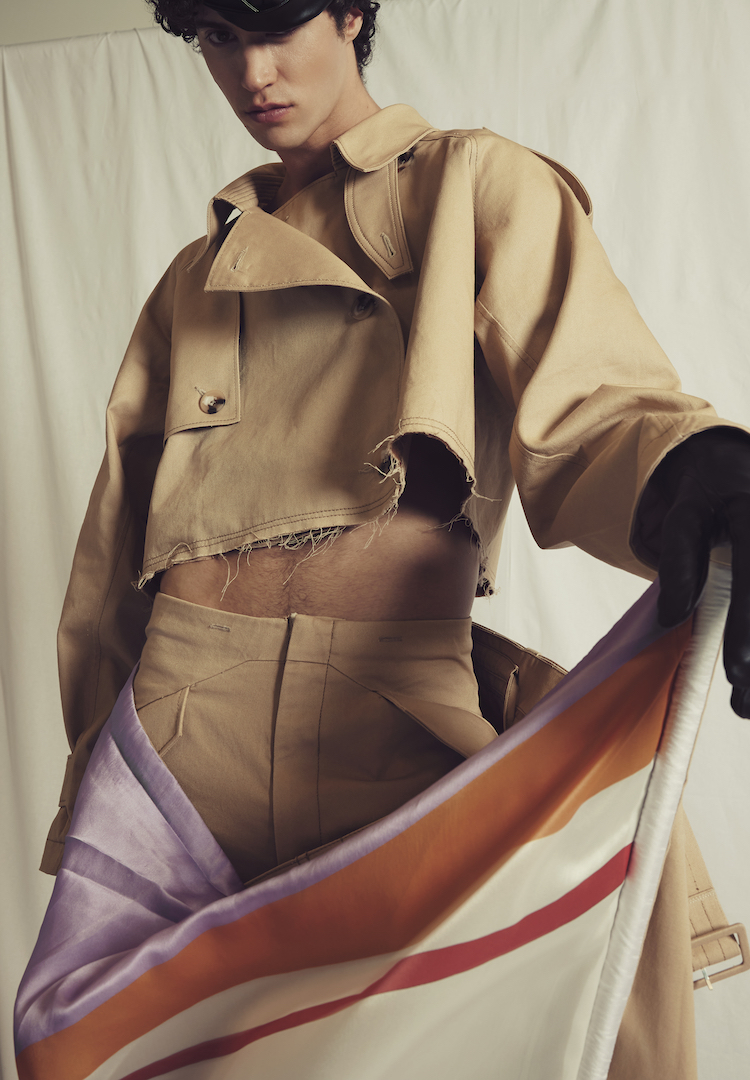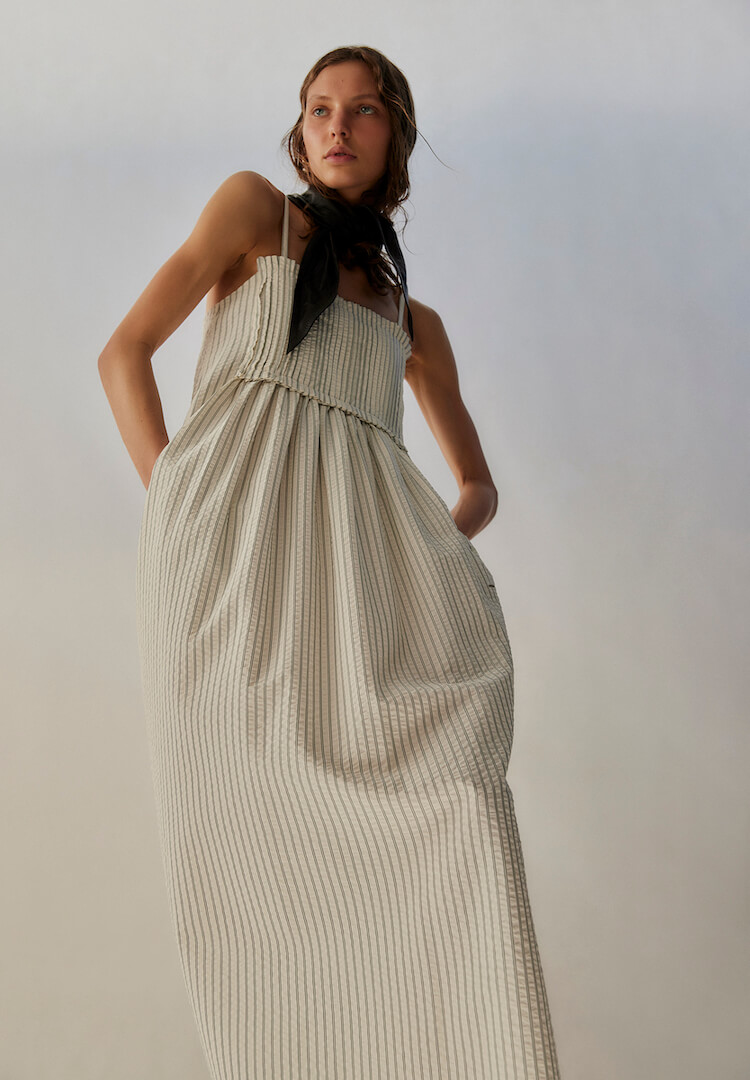Melbourne-based designer William Tjong is challenging gender norms through military-inspired fashion
Photographer – SULEIMAN THOMAS
Stylist – LY GIA PHUC
MODEL – JOE PIKE
WORDS – YASMIN GOWER
“I think broadly as a designer, I have always been fascinated with the idea of wit in fashion and not taking fashion too seriously.”
As an official media partner of PayPal Melbourne Fashion Festival, Fashion Journal is excited to once again be supporting the National Graduate Showcase x Emporium Melbourne, celebrating Australia’s top-ranked emerging fashion design talent. The top 10 leading graduates from across the country will exhibit their collections in a boundary-pushing presentation, showcasing experimental design and innovation.
Looking for more fashion news and features? Head to our Fashion section.
Over the next few weeks, we’ll be profiling each designer through a series of interviews. Next up is William Tjong. William’s creative journey began in high school, as he began to express his identity through his designs. Handpicked from a pool of students from across Australia, William’s master’s collection showcases his detailed attention to texture and structure, as well as his incorporation of secondhand materials and digital patterning to reduce waste. Below, he tells us about his collection.
Tell us about your collection.

My master’s project aims to rethink the daily act of getting dressed as well as the storage of clothing in a playful way. The collection itself took influence from military uniforms and flag-making methods. The juxtaposition of military uniform archetypes with the delicate silk charmeuse flags intends to blur lines of gender norms in fashion.
The collection features detachable flag poles which aid with every stage of wearing as well as the storage of these garments. For instance, the grey mohair military coat has an asymmetrical hem with a silk flag that interferes with the shorter side of the coat, which then wraps around the body.
The flag pole aids in the gesture of wrapping and fastening of the coat. The detachable nature of the poles allows for the practicality and wearability of these garments. And also, the poles allow for the pieces to be displayed as installations, without the body being present.
When did you know you wanted to get into fashion and textiles?
Ever since I was in high school, I have always enjoyed using clothing as a canvas of self-expression and it became clear to me that a future in fashion was what I wanted. Towards the end of high school, I discovered that fashion design was an actual course offered at universities… [and] I had taken a few illustration and dressmaking classes at that time, specialising in womenswear.

As an Asian male who grew up in a conservative society, naturally, my decision to study fashion resulted in a lot of pushback from people around me. But I decided to pursue my love for fashion and completed my fashion design studies, during which I discovered my interest in the pattern-cutting and construction of clothing. As a recent graduate, I am eager to continue my newfound practice with the ultimate goal of bringing my designs to the market.
What were the major points of inspiration for your collection, and you more broadly as a designer?
As a starting point of the project, I look[ed] into the act of rolling as a method of wearing garments. Using rolling pins and pre-existing garments, I explored how the act of rolling can alter the silhouette of a garment, creating fit as well as activating and deactivating drapes in fabric, etc.
As the project progressed, I started incorporating objects such as wooden dowels into garments to aid with wearing. The development of this collection involved a performance/workshop where the participants proposed different ways of wearing five different prototypes that I had prepared along with a set of instructions.

The prototypes were flattened garments of different categories, with additional rectangular panels added as well as two wooden dowels on both edges of the rectangle. This workshop was a reference to One Minute Sculptures by Erwin Wurm and the Cuttlefish dance performance by Linnea Bägander. By observing the gestures of the participants wearing these prototypes, they were then developed into other working prototypes. The flag and the flag poles came about late at the end of the development stage of the collection.
I think broadly as a designer, I have always been fascinated with the idea of wit in fashion and not taking fashion too seriously. To me, clothing is an essential part of human lives but fashion isn’t, so I always feel like ‘Why not have fun with it?’. Looking back at my honours collection, I explored sculptural silhouettes and transformable garments.
… In the making process, I always like to refer to vintage designs. For instance, the grey military coat was a reference to the 18th-century ‘Taxi’ dress by Charles James. And finally, in the last semester of my masters I… established a practice that explores the act of ‘dressing’ and the role it has in creating choreographic forms of expressions.
Tell us about the experience of putting together your graduate collection.
I decided to do all of the patterns and construction myself for this project. I like to be involved in the making process and had full control over how [the] final product turned out. There was definitely a lot of testing and editing involved… it was not an easy process, but with the help of the technicians and the advice given by my studio instructors, I was able to do that.

… We had a few fitting sessions throughout the semester, and usually, those were the times when the collection was being edited… I had to come to terms with last-minute changes and always be accepting of feedback.
What part does sustainability play in your design practice? And other ethical considerations?
To me, sustainability means contributing as little material waste as possible in the process of putting together a project. I have only used secondhand garments I acquired from different op shops in the sampling stage of the project, which means that I am supporting a good cause while simultaneously reducing material waste.
Previously, I have also developed my pattern digitally as well as made fit changes to garments in software such as Clo 3D. I also think taking the time to create quality garments… as well as developing proper finishes that are durable contributes a lot to sustainability in fashion.
Who do you think is most exciting in Australian fashion right now?

With my designs, I always seek to blend function and style. Templa Projects is a skiwear brand that offers a utilitarian design with a fashion-forward edge which I enjoy. I love the strong silhouettes and the utility feel of the brand Dion Lee. I also love Song For The Mute for their fun patterns and graphics as well as the use of playful hardware.
To view more of William’s work, head here. You can get your tickets to PayPal Melbourne Fashion Festival’s National Graduate Showcase x Emporium Melbourne here.













